Veterinary drugs or veterinary medicinal products are substances used to prevent or cure disease in food-producing animals. Veterinary drug residues, or their metabolites, may persist in certain tissues of the animal and in products obtained from them, potentially entering the human food chain.
The inappropriate use of these compounds and their presence in various foods of animal origin can lead to bacterial resistance and allergic reactions. Studies have shown that consumption of products from animals treated with veterinary drugs is a significant source of unintended antibiotic intake by humans.
Regulation & Control of Veterinary Drugs
The European Medicines Agency (EMA) assesses Maximum Residue Limits (MRLs) for veterinary medicinal products marketed in the EU. Regulation (EU) 37/2010 classifies pharmacologically active substances into allowed and prohibited categories:
AMR: Antimicrobial Resistance
AMR is the ability of bacteria to become increasingly resistant to an antibiotic drug to which they were previously susceptible. Antibiotic resistance genes develop as a consequence of natural selection and genetic mutations.
According to the FAO and WHO, antibiotic resistance is a major global threat that is of increasing concern for human and animal health. The presence of increasingly resistant microorganisms in agri-food chains represents a potential route of exposure for animals, the foodstuffs derived from them, and therefore for consumers.
To mitigate risks, preventive measures from production to consumption are essential:
- In animal husbandry: Reduce the use of antibiotics and consider alternatives to medication such as probiotics, prebiotics, or vaccines. Manage herds according to precise hygiene and disease control guidelines to prevent the development of antibiotic resistance.
- During processing: Implement Good Hygiene Practices (GHP) and give priority to raw materials treated only with necessary veterinary medicines.
- At the point of consumption: Emphasize personal hygiene and maintain cleanliness in processing and cooking areas. Give preference to untreated food when possible.
Regulatory Framework
Veterinary Drug Residues: our Analytical Services
Mérieux NutriSciences provides a comprehensive analytical service, offering multi-residue profiling through high-performance liquid chromatography with a triple quadrupole mass detector for various food matrices, feed, pet food, and biological fluids.
Our laboratories can also propose dedicated profiles based on the matrix to be analyzed, such as honey, which has its dedicated screening.
Mérieux NutriSciences offers an analytical package fully compliant with the principles and requirements of Decision 2002/657/EC:
- Criteria and procedures for validating analytical methods, ensuring the quality and comparability of results among official laboratories.
- Common criteria for interpreting test results.
- Minimum Required Performance Limits (MRPL) for analytical methods to detect substances without a maximum limit.
- Performance monitoring during routine analysis.


